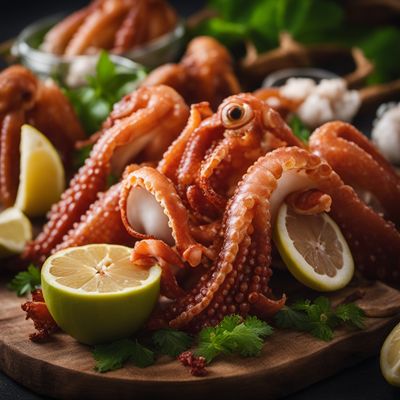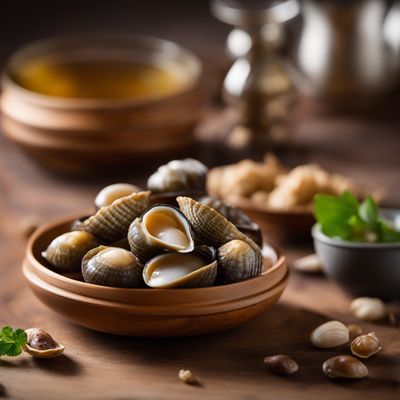
Ingredient
Miscellaneous marine molluscs
Oceanic Treasures: Miscellaneous Marine Molluscs
Miscellaneous marine molluscs include a variety of shellfish such as clams, mussels, oysters, and scallops. Each mollusc possesses its own unique taste and texture, ranging from tender and sweet to briny and succulent. These oceanic treasures are highly versatile and can be enjoyed steamed, grilled, or incorporated into soups, stews, and pasta dishes.
Origins and history
Shellfish have been a vital food source for coastal communities throughout history. They have been harvested and consumed for thousands of years, with evidence of their consumption dating back to ancient civilizations such as the Greeks and Romans. Today, shellfish are enjoyed worldwide and are an integral part of many coastal cuisines.
Nutritional information
Miscellaneous marine molluscs are a good source of lean protein, omega-3 fatty acids, and essential minerals such as iron and zinc. They are also low in calories and fat, making them a nutritious choice for seafood lovers.
Allergens
Some individuals may have allergies to shellfish, including molluscs. It is important to exercise caution and consult with a healthcare professional if you have any known allergies or sensitivities.
How to select
When purchasing miscellaneous marine molluscs, choose ones that are alive and have tightly closed shells. Avoid any with cracked or damaged shells, as this may indicate spoilage. Freshness is key, so buy from reputable sources and ensure proper storage during transportation.
Storage recommendations
To maintain the freshness and quality of miscellaneous marine molluscs, store them in a cool environment, such as a refrigerator or ice-filled cooler. Keep them covered with a damp cloth or paper towel to prevent them from drying out. It is best to consume them as soon as possible after purchase for optimal flavor and texture.
How to produce
Cultivating miscellaneous marine molluscs requires specialized equipment and knowledge, making it more suitable for commercial operations. However, individuals can participate in sustainable shellfish farming initiatives or support local shellfish farmers by purchasing their products.
Preparation tips
Miscellaneous marine molluscs can be prepared in various ways, such as steaming, grilling, or sautéing. They can be enjoyed on their own, with a squeeze of lemon or a flavorful sauce, or incorporated into dishes like paella, seafood pasta, or chowder.
Substitutions
If miscellaneous marine molluscs are not available, suitable substitutions include other types of shellfish such as shrimp, lobster, or crab, depending on the specific recipe or dish.
Culinary uses
Miscellaneous marine molluscs are widely used in various cuisines around the world. They are commonly featured in dishes like clam chowder, moules marinières, and seafood risotto. They are also a popular choice for sushi and sashimi in Japanese cuisine.
Availability
Miscellaneous marine molluscs are commonly available in coastal regions and areas with access to fresh seafood. They can also be found in seafood markets, fishmongers, and some supermarkets.
More ingredients from this category

Scallops, pectens
The Delicate Gems of the Sea: Exploring the World of Scallops

Squids, cuttlefishes, octopuses
Oceanic Delights

Freshwater molluscs
Delicate Aquatic Gems

Abalones, winkles, conchs
Oceanic Delicacies: Exploring the World of Abalones, Winkles, and Conchs

Oysters
"Oceanic Delicacy: Exploring the World of Oysters"

Mussels
The Ocean's Delicacy

Clams, cockles, arkshells
The Ocean Treasures